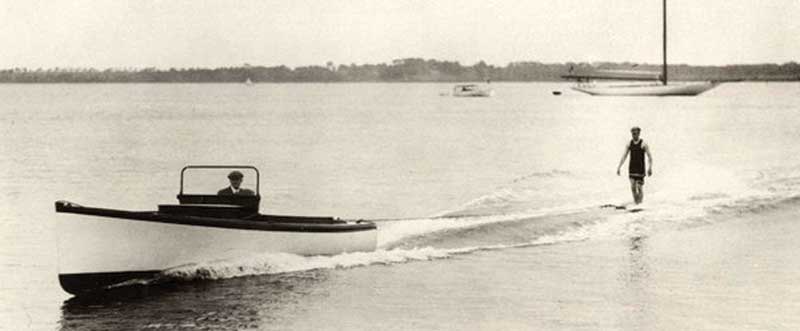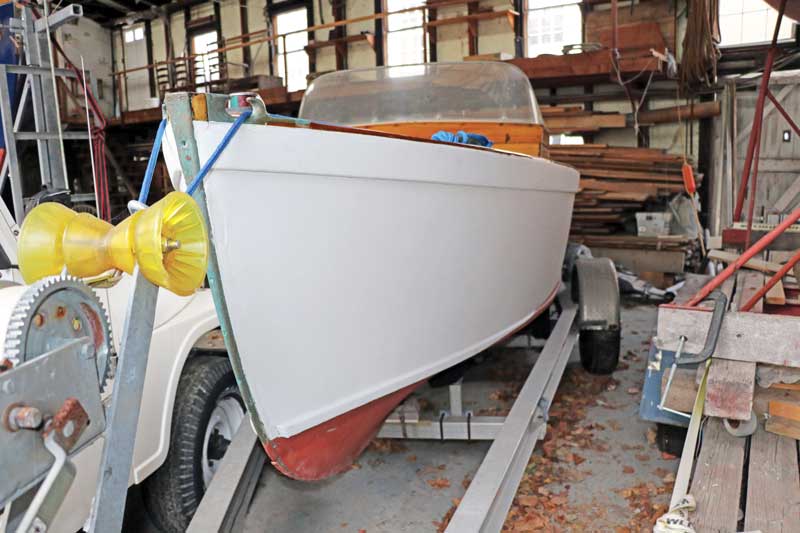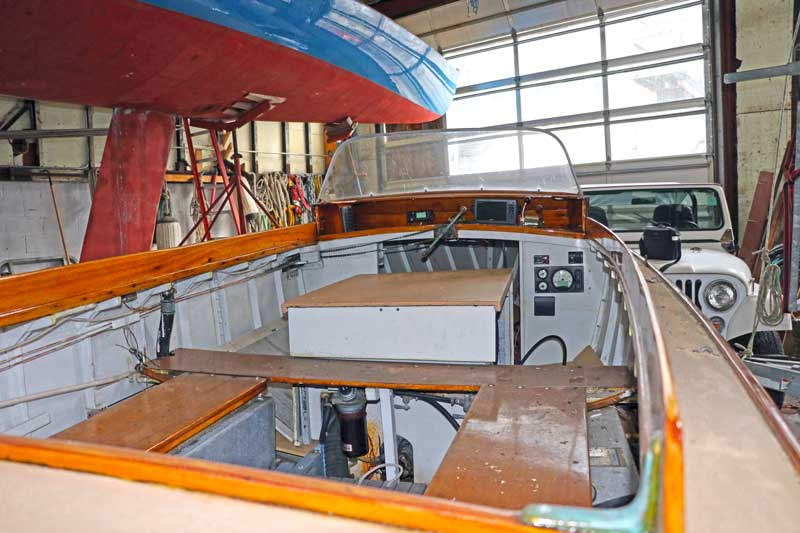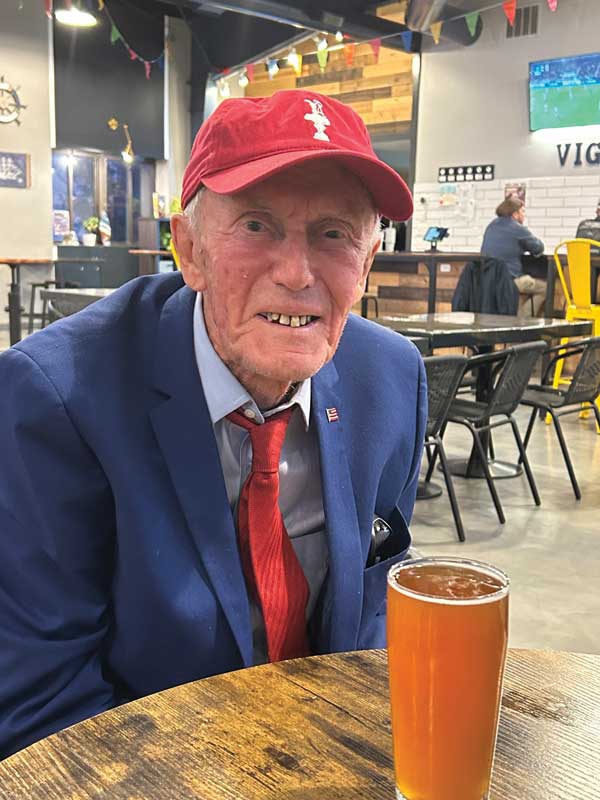The 26-foot-long wooden motor launch Bubble rests on blocks in an ancient, cluttered shed that is part of the venerable legacy of the Herreshoff Manufacturing Company in Bristol, RI. During the Civil War, the cavernous old shed was part of the Burnside Rifle Factory, but now it is home, storage, and a workshop for antique wooden boats including Bubble.

Bubble is in good shape, and plans are for her, after a little cosmetic touch-up, to rejoin the other Herreshoff Marine Museum boats on the nearby Bristol waterfront this summer. The name ‘Bubble’ seems a bit whimsical, and with the Herreshoffs not traditionally known much for their whimsy, my curiosity was piqued when I heard that Bubble, essentially a summertime workhorse for the museum, was possibly going back into the water again in 2025. Now, to me, that was exciting news; I rode in her once, for a short but pleasant trip around the harbor, and I haven’t seen her out there for some time. She’s an antique classic, and rather fast as well.
But as typical as her appearance may seem, Bubble is as un-typical as a Herreshoff boat can be. The original Bubble (this one is the second) came into the world in 1912, at a time when small motorboats with internal combustion engines had not really arrived in the boating world yet, a world dominated by sail and steam. Indeed, small power launches were typically powered by steam, as the restored 1882 Herreshoff steam launch #94 Dragon illustrates. The current Dragon is a near replica built in 2017 by Redd’s Pond Boatworks in Marblehead, MA.

Designed by A. Sidney deWolf Herreshoff and launched in 1912, Bubble (HMCo. #285) was a rather revolutionary boat that some might suggest heralded the distant future. Powered by a gasoline (or naphtha?) fueled engine, probably with four cylinders, she was capable of respectable speeds, enough to pull a water skier or ‘Aquaplaner’ behind, often consisting of one athletic family member riding a single ski board and standing up, sometimes while balancing another on their shoulders.
Sidney was a son of the famed yacht designer and naval engineer Nathanael G. Herreshoff, the ‘Wizard of Bristol,’ and was a great yacht designer and builder in his own right. When the first Bubble was destroyed in the Great New England Hurricane of 1938, Sidney promptly built another Bubble, using parts salvaged from the wreckage of the first one, as any good Yankee would. The second Bubble is the one that I examined in the boat shed, and the one slated to re-launch this summer. She is cedar planked on steam-bent oak frames, and she begins with a plumb stem and sharp bow which then flattens out to a reasonably hard-chine planing hull moving aft. This flattening out of the hull graduating aft is something that would, of course, allow her to attain reasonable speed with the mildly powered gas engine that she was equipped with, making ‘aquaplaning’ possible, but which was also a departure from launch and powerboat hull designs in general at the time of her initial design. Her relatively narrow six-foot beam also helped her attain respectable speeds given the low engine horsepower available.

When I visited Bubble recently, I noted that she is not equipped with a steering wheel, but rather a steering ‘mechanism,’ a horizontal bar that turns on a hub, linked by a bicycle-chain loop that is attached to a cable running aft to the rudder quadrant and post in the stern. I met recently with Halsey Herreshoff, Sidney’s son, over a beer in a local brewpub. Halsey has undoubtedly spent many hours at the helm of Bubble over the years, so I asked him about this curious arrangement, that of having a horizontal cast bronze bar with a knob at each end rather than a steering wheel.
“Well, that’s so that you can get under there (the foredeck and cuddy) without it being in the way,” Halsey explained matter-of-factly. “A wheel would be an obstacle with the limited clearance available; in this case, you simply turn the steering bar so that it is horizontal, and there is no obstacle; you can’t get stuck.” I asked if the steering mechanism had been salvaged from the original wrecked Bubble; it had.

The Herreshoffs were engineers through and through, who not only designed and built the hulls of their boats, but the engines that drove them as well. The first Bubble was driven by a four-inch by five-inch Herreshoff gasoline motor that in turn drove a single screw, a 16 by 18 RH three-blade prop. Her current prop has four blades, and her post-hurricane engine has also been replaced, upgraded to a more modern Yamaha diesel. I asked Halsey why this was so; “Because I wanted to go faster,” he replied.
Halsey winters in Florida every year, and at the time of this writing, he has already migrated south, but he will return in the spring. We’ll wait for that, and to hopefully see Bubble emerge from the dark old shed to take her place where she belongs among the other wooden classics along the Bristol waterfront.
By Capt. Michael L. Martel